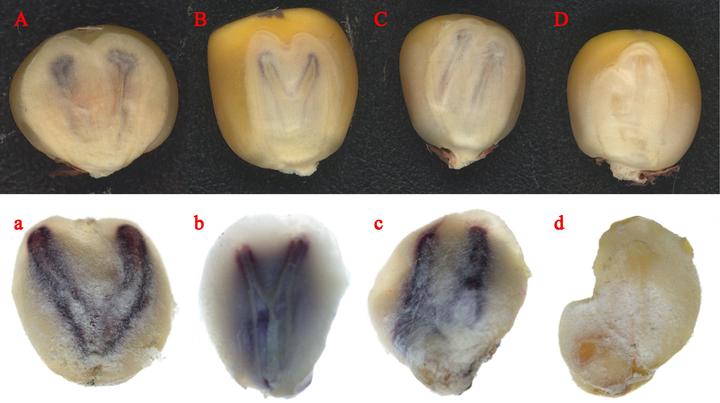 Image credit by Wei Li
Image credit by Wei Li
Abstract
We investigated twin-embryo frequency in progenies of different haploid inducers. Results reveal that increasing the haploid potential significantly improved the frequency of twin-embryo kernels. Compared with the average twin-embryo kernel frequency among selfed progenies of 20 inbred lines (average frequency = 0.08%), the frequency of twin-embryo improved to 0.16% in progenies pollinated by the haploid inducer line CAU5. This result was further confirmed by pollinating single hybrid 5580 with four haploid inducers owe differentiated HIRs, which twin-embryo frequency was highly correlated with HIR. Among 237 twin-embryo kernels, we identified 30 twin-embryo kernels (12.66%), a frequency which was much greater than the average HI rate for three other inducer lines (frequency range 2–10%). In addition, aneuploids, occurred at high frequency (8 in 41 twin plants). This level of aneuploidy provides new insight into the mechanism of HI. Moreover, we observed differences in growth rate between twin plants in the field, as 4.22% of the twin plants grew at a significantly different rate. Both simple sequence repeat markers and 3072 SNP-chip genotyping results revealed that >90% of the twin plants shared the same origin, and the growth difference could be attributed to aneuploidy, competition for nutrients, and possible hormone regulation.